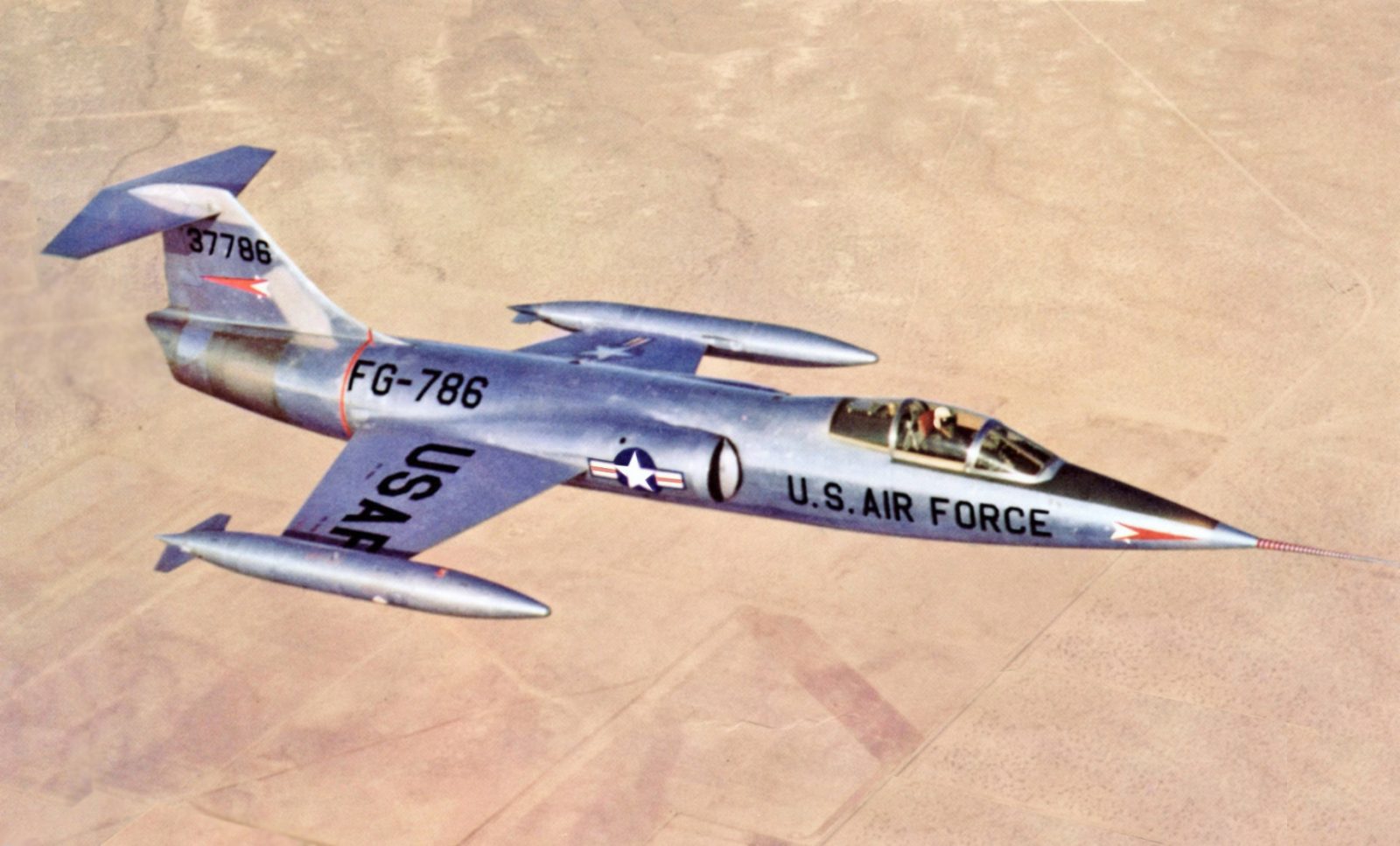The Lockheed F-104 Starfighter was a single engine, supersonic aircraft that was used for interception missions but was later used as the attack fighter. The aircraft was originally designed by the Lockheed for the use of USA. However, later the company manufactured it to present for use for other world air forces as well. The aircraft belongs to the Century Series fighter jets and was used by nearly dozens of air forces across the globe for the time in between 1958 to 2004.

The aircraft was developed by the contribution of a man named Kelly Johnson who to his name has the development of following fighter jets of the modern times.
- Lockheed P-38 Lightning
- Lockheed U-2
- Lockheed SR-71 Blackbird
During its time of soaring in the skies for the first time, the aircraft broke several of the air speed as well as altitude records. While the aircraft was subjected for service in many world air forces, it was also marred by the massive Lockheed Bribery Scandal. In this scandal, Lockheed strong-armed many political as well as military figures of various nations in securing themselves some major purchase contracts. This led to a massive political controversy to arise in Japan and Europe.
The aircraft’s final variant was named as F-104S which was an all-weather interceptor aircraft. The aircraft was manufactured by the aviation company “Aertalia” for the Italian Air Force.
For our readers, we present to you some of the interesting facts about the Lockheed F-104 Starfighter: the Mid Century fighter, which are as follows.
Engine:-
The Lockheed F-104 Starfighter was powered by a single General Electric J79-GE-11A afterburning turbojet. This engine was able to produce the dry thrust of upwards of 10000 lb/ft and 15600 lb/ft on afterburner.
Performance
The Lockheed F-104 Starfighter Was designed without any kind of radar system. For the aircraft to be combat-effective it required the weather to be near perfect. The aircraft was developed in the time when the Korean War was going to start and in that war zone, the aircraft had a ratio of 1:1 against the Soviet fighters.
Due to the less productive performance in combat, the Public Relations tried multiple times to present the productive performance of Lockheed F-104 Starfighter against the Mig-15s and 19s to be 15:1 but they had no proof of it.
Prone to mishaps:-
The aircraft was released for service of USAF back in 1958 and the Lockheed presented the aircraft to be the solution to the increasingly fast as well as the jet-powered fighter aircraft. The aircraft was developed to bring the air superiority for USAF and this resulted in USAF to purchase nearly 300 of these aircraft.
However, the reality was far from different as Lockheed F-104 Starfighter came with many disastrous accidents throughout the course of its service. The aircraft had multiple air-to-air as well as air-to-ground accidents. To make things more difficult, the aircraft had a difficult landing. Out of the 300 Lockheed F-104 Starfighter in USAF, nearly 49 of them crashed causing the lives of 19 pilots to be lost.
Designed for Speed:-
The Lockheed F-104 Starfighter was meant for achieving high speed and for that very purpose, the aircraft’s design was made based on a guided rocket. The problem was that this guided rocket-like aircraft was actually holding in a pilot as well as a 20 mm cannon. To make things difficult, the aircraft also did not have any radar system and also could not target or attack any Soviet bomber.
The one thing that Lockheed F-104 Starfighter was excelled at was its amazing speed. The aircraft could fly at a top speed of Mach 2.0 and was able to outrun any fighter jet of its era. The aircraft was designed to counter the Soviet-built MiG-15s. unfortunately, the aircraft only had speed, unlike MiG-15 which were not only compact in size but were more capable than Lockheed F-104 Starfighter in maneuvering tactics.
Ejection Seat:-
The Lockheed F-104 Starfighter also had one other major flaw and it was the downward facing ejection seat. This ejection seat was a problem for the pilots who were flying the aircraft at the cruising speed of Mach 1.8.
According to one instance, a plot in need of ejection had to first flip the aircraft upside down to eject. Unfortunately, before he could eject, the aircraft hit the ground.
Brief Time in Vietnam War:-
The Lockheed F-104 Starfighter was featured in the Vietnam for a very short period despite it being unsuitable for providing close air support. The reason it was pulled out from Vietnam was that the aircraft only had speed with no real maneuvering when facing the Soviet fighters, thus aiming it easy prey for the enemy to strike down.
One instance of the disastrous performance during the Vietnam War was when an F-104 crossed the border for China and a MiG-19 shot it down. 2 other F-104s were deployed to search it but they ended up colliding with each other.
Attack Strategy:-
The entire attacking strategy of the Lockheed F-104 Starfighter was to fly straight into the enemy formations and then turn around. After turning around the aircraft would attack with heat-seeking missiles. The aircraft was not meant to be a suitable jet fighter in a dogfight and in fact, it could not hold itself in one.
Until 1967, all for the Lockheed F-104 Starfighters from USAF were removed from the active duty and were later sold off to other countries. Even there, the aircraft’s reputation fell further down the drain as the pilots of various nations called it as the “Flying Coffin”.
Single beneficial contribution:-
The Lockheed F-104 Starfighter only beneficial contribution which it ever made was not for any air force but for NSAS. The aircraft could have the top speed of Mach 2.0 and was able to climb the ceiling height of 50000 feet or 15000 miles making it excellent for rocket testings.
Related Content